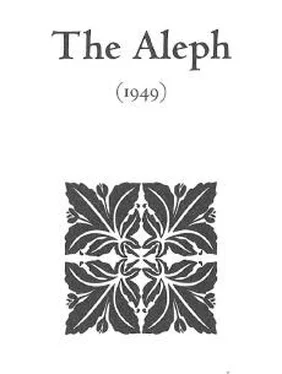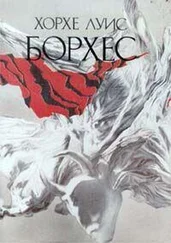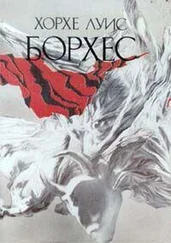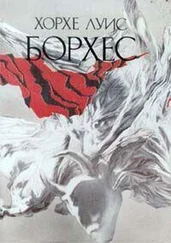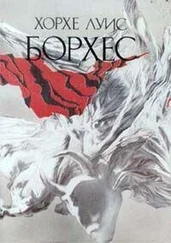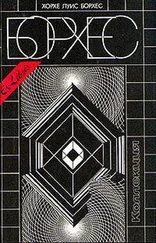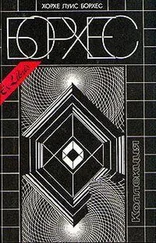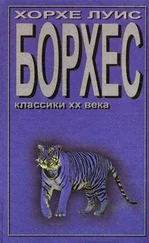Хорхе Борхес - Collected Fictions
Здесь есть возможность читать онлайн «Хорхе Борхес - Collected Fictions» весь текст электронной книги совершенно бесплатно (целиком полную версию без сокращений). В некоторых случаях можно слушать аудио, скачать через торрент в формате fb2 и присутствует краткое содержание. Год выпуска: 1999, ISBN: 1999, Издательство: Penguin (UK), Жанр: Старинная литература, на английском языке. Описание произведения, (предисловие) а так же отзывы посетителей доступны на портале библиотеки ЛибКат.
- Название:Collected Fictions
- Автор:
- Издательство:Penguin (UK)
- Жанр:
- Год:1999
- ISBN:9780140286809
- Рейтинг книги:5 / 5. Голосов: 1
-
Избранное:Добавить в избранное
- Отзывы:
-
Ваша оценка:
- 100
- 1
- 2
- 3
- 4
- 5
Collected Fictions: краткое содержание, описание и аннотация
Предлагаем к чтению аннотацию, описание, краткое содержание или предисловие (зависит от того, что написал сам автор книги «Collected Fictions»). Если вы не нашли необходимую информацию о книге — напишите в комментариях, мы постараемся отыскать её.
Collected Fictions — читать онлайн бесплатно полную книгу (весь текст) целиком
Ниже представлен текст книги, разбитый по страницам. Система сохранения места последней прочитанной страницы, позволяет с удобством читать онлайн бесплатно книгу «Collected Fictions», без необходимости каждый раз заново искать на чём Вы остановились. Поставьте закладку, и сможете в любой момент перейти на страницу, на которой закончили чтение.
Интервал:
Закладка:
Juan Muraña
* Palermo: A district in Buenos Aires, populated originally by the Italians who immigrated to Argentina in the nineteenth century. Trapani's name marks him as a "native" of that quarter, while Borges and his family moved there probably in search of a less expensive place to live than the central district where they had been living; Borges always mentioned the "shabby genteel" people who lived in that "shabby genteel" neighborhood (Rodriguez Monegal, pp. 48-55).
* Juan Muraña: As noted in "The Encounter," at one point Juan Moreira was the very model of the gaucho and therefore of a certain kind of swaggering masculinity; Juan Muraña's name so closely resembles Moreira's that one suspects that JLB is trading on it to create the shade that so literarily haunts this story. In the dream, especially, Muraña has the look of the gaucho:dressed all in black, with long hair and mustache, etc. Nor, one suspects, is it pure coincidence that the story"Juan Muraña"immediately follows the story in which Juan Moreira's ghost plays such a large part.
* Around the time of the Centennial: The Centennial of the Argentine Declaration of Independence, signed 1810, so the story takes place around 1910.
* A man named Luchessi: Luchessi's name marks him too as a "native" of Palermo, though he has now moved into a district in southern Buenos Aires, near the bustling (if "somewhat dilapidated" [Fishburn and Hughes]) Plaza de la Constitución and its railway station.
* Barracas: Fishburn and Hughes gloss this as a "working-class district in southern Buenos Aires near La Boca and Constitución [see note just above] and bordering the Riachuelo."
* Wop: See note to "Little Sheeny," p. 355, above. In Spanish, gringo was the word used to refer to Italian immigrants; see A Note on the Translation.
* Calle Thames: In Palermo.
The Elderly Lady
* Wars of independence: For the independence not only of Argentina but of the entire continent. During this period there were many famous generals and leaders, many named in the first pages of this story. Thus Rubiois associated with the grand forces of continental self-determination that battled in the second and third decades of the nineteenth century.
* Chacabuco, Cancha Rayada, Maipú, Arequipa: Chacabuco (Chile,1817): The Army of the Andes under General José San Martín fought the Spanish royalist forces under General Marcò del Pont and won. Cancha Rayada (Chile, March 1818): San Martin's army was defeated by the royalists and independence was now very uncertain. Maipú(Chile, April 1818): San Martin's army decisively defeated the royalist forces and secured the independence of Chile. Arequipa ( Peru, 1825): General Antonio José de Sucre, leading Bolivar's army, accepted Spain's surrender of the city after a siege; this, after the Battle of Ayacucho (see below), meant the full independence of Peru.
* He and José de Olavarría exchanged swords: Olavarría (1801-1845) was an Argentine military leader who fought at the battles just mentioned and perhaps at the great Battle of Ayacucho, which determined the full independence of Peru. Exchanging swords was a "romantic custom among generals, and Borges recalls that his own grandfather had exchanged swords with Gen. Mansilla on the eve of a battle" (Fishburn and Hughes). Olavarría and Lavalle (see below) are probably the models for Rubio.
* The famous battle of Cerro Alto ... Cerro Bermejo: However famous this battle may be, I confess I have not been able to locate it. I hope (for the good name of the humble research that has gone into these notes) that this is an example of Borges' famous put-ons (see A Note on the Translation). I feel that it may well be; this is the bird's-eye statement given in the Penguin History of Latin America (Edwin Williamson, New York/London: Penguin, 1992), p. 228, of the years 1823-1824 as they apply to Bolivar (who is mentioned as winning this battle): "Arriving in Peru in September 1823, Bolivar began to prepare for the final offensive against the royalists. By the middle of 1824 he launched his campaign, winning an important battle at Junin, which opened to him the road to Lima, the ultimate prize. In December, while Bolivar was in Lima, Marshal Sucre defeated Viceroy De la Serna's army at the battle of Ayacucho. Spanish power in America had been decisively broken and the Indies were at last free." Thus, it appears that in April of 1823 Bolivar was planning battles, not fighting them. If it is a real battle, I ask a kind reader to inform me of the date and location so that future editions, should there be any, may profit from the knowledge.
* Ayacucho: In Peru between Lima and Cuzco (1824). Here Sucre's Peruvian forces decisively defeated the Spanish royalists.
* Ituzaingó: In the province of Corrientes (1827). Here the Argentine and Uruguayan forces defeated the Brazilians.
* Carlos Maria Alvear: Alvear (1789-1852) had led the Argentine revolutionary forces against the Spanish forces in Montevideo in 1814 and defeated them. When he conspired against the Unitarian government, however, he was forced into exile in Uruguay, but was recalled from exile to lead the republican army of Argentina against the Brazilians. He defeated the Brazilians at Ituzaingó, ending the war. He was a diplomat for the Rosas government.
* Rosas: Juan Manuel de Rosas (1793-1877), tyrannical ruler of Argentina from 1835 to 1852. See note to Foreword, p. 345.
* Rubio was a Lavalle man: Juan Galo Lavalle (1797-1841), chosen to lead the Unitarians against the Federalists under Rosas, whom Lavalle defeated in 1828. Lavalle was defeated in turn by Rosas in 1829; then "after ten years in Montevideo he returned to lead the Unitarians in another attempt to oust Rosas" (Fishburn and Hughes). Thus he spent his life defending the policies and the principles of the Buenos Aires political party against those of the gaucho party headed by Rosas.
* The montonero insurgents: These were gaucho guerrillas who fought under their local caudillo against the Buenos Aires-based Unitarian forces. While it is claimed that they would have had no particular political leanings, just a sense of resistance to the centralizing tendencies of the Unitarians, the effect would have been that they were in alliance with the Federalists, led by Rosas, etc.
* Oribe's White army: The White party, or Blancos, was "a Uruguayan political party founded by the followers of Oribe,... [consisting] of rich landowners who supported the Federalist policy of Rosas in Buenos Aires___The Blancos are now known
as the Nationalists and represent the conservative classes" (Fishburn and Hughes). Manuel Oribe (1792-1856) was a hero of the Wars of Independence and fought against the Brazilian invasion of Uruguay. He served as minister of war and the navy under Rivera; then, seeking the presidency for himself, he sought the support of Rosas. Together they attacked Montevideo in a siege that lasted eight days. (This information, Fishburn and Hughes). See also note to p. 386, "Battle of Manantiales,"in the story "The Other Duel."
* The tyrant: Rosas (see various notes above).
* Pavónand Cepeda: Cepeda (Argentina, 1859) and Pavón (Argentina, 1861) were battles between the Confederation forces under Urquiza and the Buenos Aires-based Porteño forces (basically Unitarian) under Mitre, fought to determine whether Buenos Aires would join the Argentine Confederation or would retain its autonomy. Buenos Aires lost at Cepeda but won at Pavón, enabling Mitre to renegotiate the terms of association between the two entities, with more favorable conditions for Buenos Aires.
Читать дальшеИнтервал:
Закладка:
Похожие книги на «Collected Fictions»
Представляем Вашему вниманию похожие книги на «Collected Fictions» списком для выбора. Мы отобрали схожую по названию и смыслу литературу в надежде предоставить читателям больше вариантов отыскать новые, интересные, ещё непрочитанные произведения.
Обсуждение, отзывы о книге «Collected Fictions» и просто собственные мнения читателей. Оставьте ваши комментарии, напишите, что Вы думаете о произведении, его смысле или главных героях. Укажите что конкретно понравилось, а что нет, и почему Вы так считаете.
